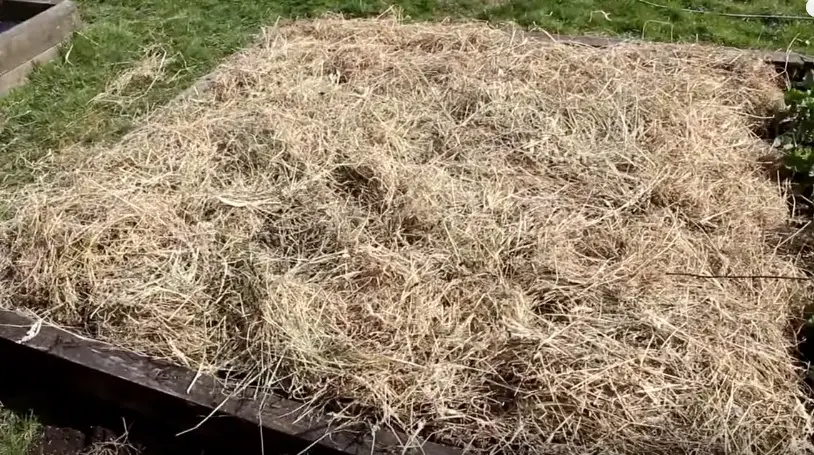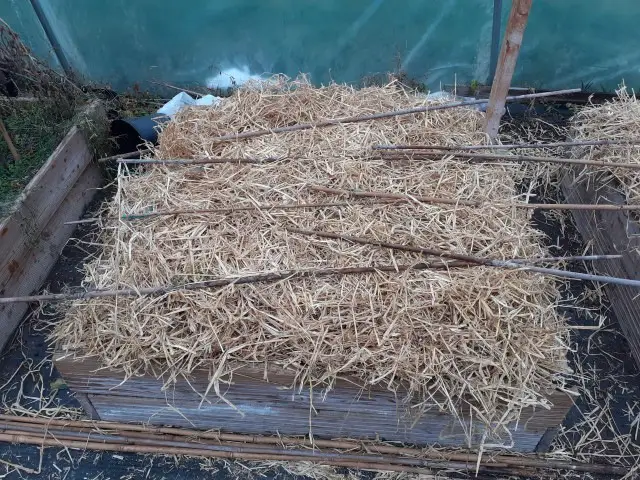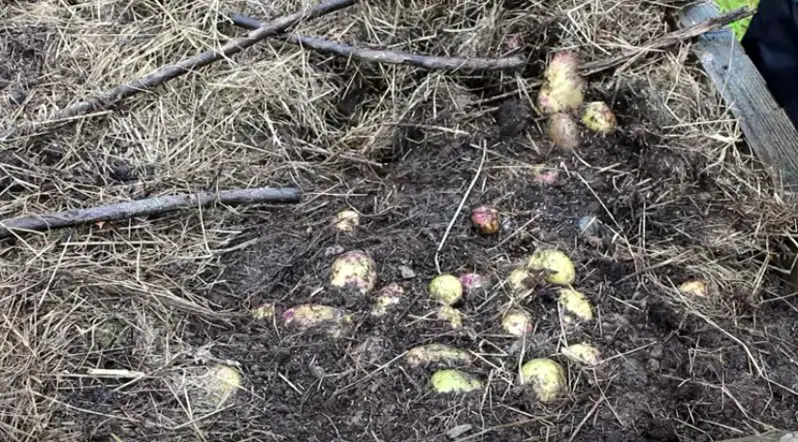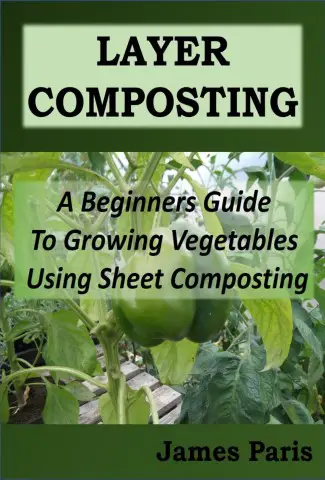Growing potatoes under a layer of straw or indeed a straw mulch, is just 1 example of no-dig vegetable gardening that inspires and encourages gardeners to think ‘outside the box’ and try something different.
The ‘straw mulch method’ for growing potatoes can be a very effective method indeed, especially for potatoes. There is literally no digging involved apart from a little preparation of the area at the beginning, and harvesting the crop is a simple matter that hardly needs any tools at all.
Before looking in more detail at the concept of planting potatoes in straw, here is a summary of the mulch method for growing potatoes.
- Prepare an area like a Raised bed that has a good compost/soil mix.
- Gather your chitted potatoes (potatoes that have been set aside to sprout a couple of inches).
- Rake out the soil evenly then gently push your seed potatoes into the soil so the tuber is covered and the sprout is just below the surface.
- Cover over with a thick layer (at least 4 inches or 10cm) of loose straw or hay.
That is the basis of growing potatoes under a straw. The potatoes will grow as normal and you can harvest the crop simply by pulling away the straw to reveal the potatoes at the right time.

Another interesting aspect of this method is that you can take a ‘sneak peak’ anytime at your growing potatoes by simply lifting away the straw to examine progress.
The potatoes themselves will be lying on the surface of the soil just under the straw itself – as you can see in the pictures.
The only digging that you need do at this time is to use a small hand-fork to ease out the tubers from the ground.
Straw or Hay for Mulching?
Both straw and hay can be used for mulching in this way as both have their advantages or disadvantages when growing potatoes or indeed most other veggies.
Unlike hay-which is used as a feed for livestock over the winter months, straw has no nutrient advantages whatsoever as it is basically a sterile environment being the by-product of barley or wheat crops predominantly.
over the winter months, straw has no nutrient advantages whatsoever as it is basically a sterile environment being the by-product of barley or wheat crops predominantly.
This means that you will not be troubled with grass seed sprouting all over your potato patch throughout the growing season, thus making it the ‘cleaner’ option to hay. To be fair however you will have the occasional barley or wheat corn sprouting up that needs dealt with.
The advantage with using hay is the fact that it is packed full of nutrients that will leach into the soil and feed the potatoes as they grow, thus potentially producing a more abundant crop – but you will have the weed issue to contend with.
What would I choose?
A good way to choose is to consider just 2 things.
- the potential source of the materials – what is easier or cheaper for you to acquire.
- The condition of your soil. Is it poor quality? If this is the case, then it may be a good idea to use hay as it will enrich the soil which could ultimately lead to a better crop.
So ultimately if I had good soil and an easy supply of straw then I would just use the straw as it will require less weeding through the season.
I would choose to use hay only if soil condition was poor, or I had an easy supply of hay but not straw to hand.
Is this method different from mulching around the potatoes?
Indeed it is. This method involves growing the potatoes through the mulch, where mulching around potatoes is something you do as the potatoes are growing to prohibit weeds or help prevent ground-moisture loss in a dry climate especially.
When you mulch around potatoes in this way, the seed itself is planted at depth as normal, where with the covering method the potatoes are virtually on the surface.

Disadvantages of Mulch Gardening
So far I’ve pointed out the advantages of growing potatoes in this way, using either straw or hay to mulch the potatoes.
But to be fair there are a couple of disadvantages that – though maybe not game-changers, do need considering.
- Slugs and other insect predation
- Predation by foragers
Where I live there is an abundance of tiny black slugs that leave round holes in exposed potato tubers if they get access. This is often the case with the mulching method unfortunately – and more especially with hay rather than straw.
Animal foragers like rats, field mice, chickens, racoons, or even wild pigs will find it easy to forage under the loose covering of straw and munch on your vulnerable potatoes.
So if you are bothered by any of these critters then you will have to take some pest control measures to protect your potatoes.

Bottom line?
Personally I love this idea. It is very easy to execute and the harvest is generally good and easy to uplift.
Amongst the other no-dig gardening methods I use, this is definitely an ‘annual choice’ for my potato crops – though I still find the Square Foot gardening method my favourite for multiple vegetables including potatoes.
To be sure, there are many ways to grow potatoes, such as in a potato cage or sack. In fact this mulching way is not dissimilar to the Layer composting or Lasagna gardening process – another very successful no-dig gardening method
If you haven’t tried growing potatoes using this mulching method before, then I would encourage you to give it a try – it just keeps growing vegetables that bit more interesting to try out new ideas!

